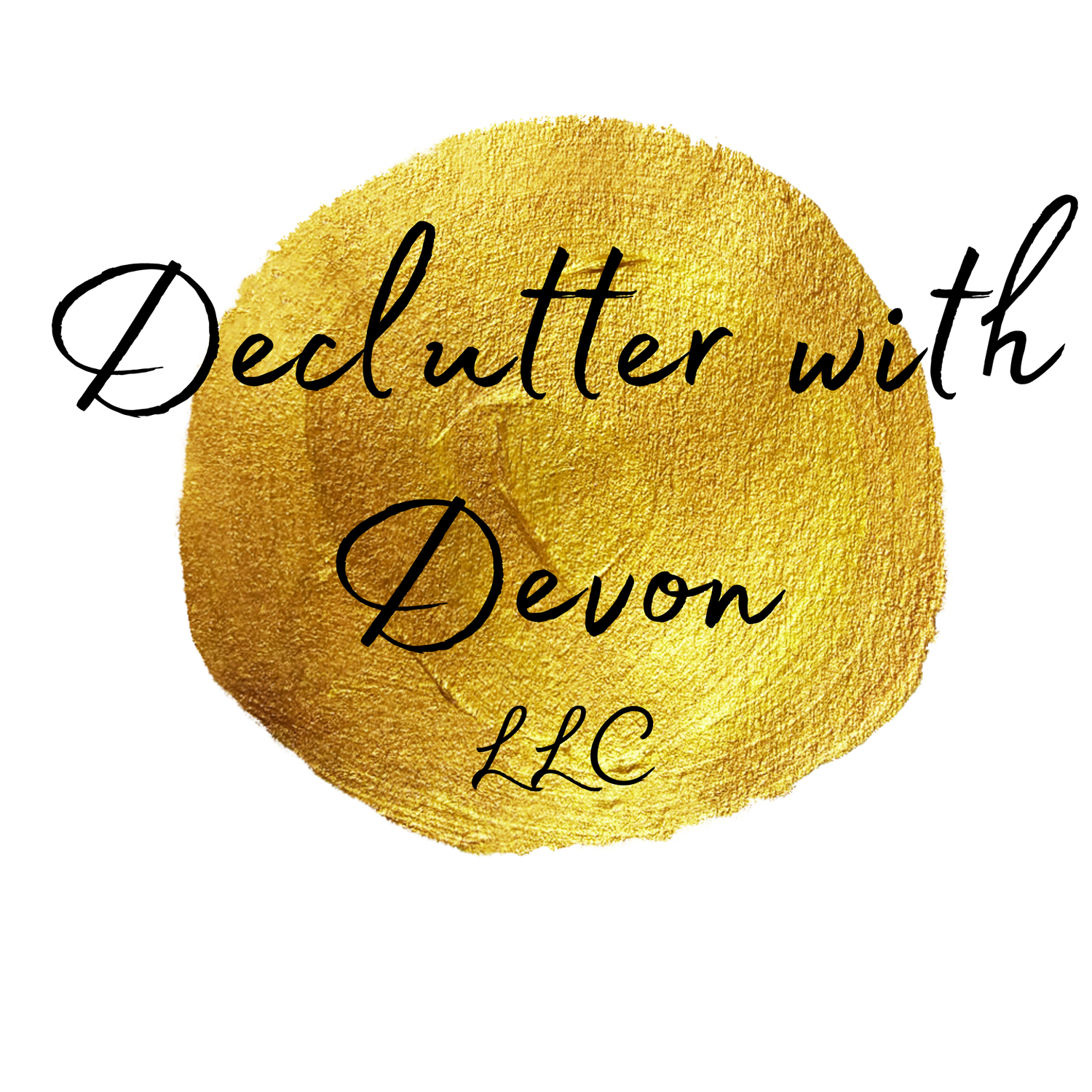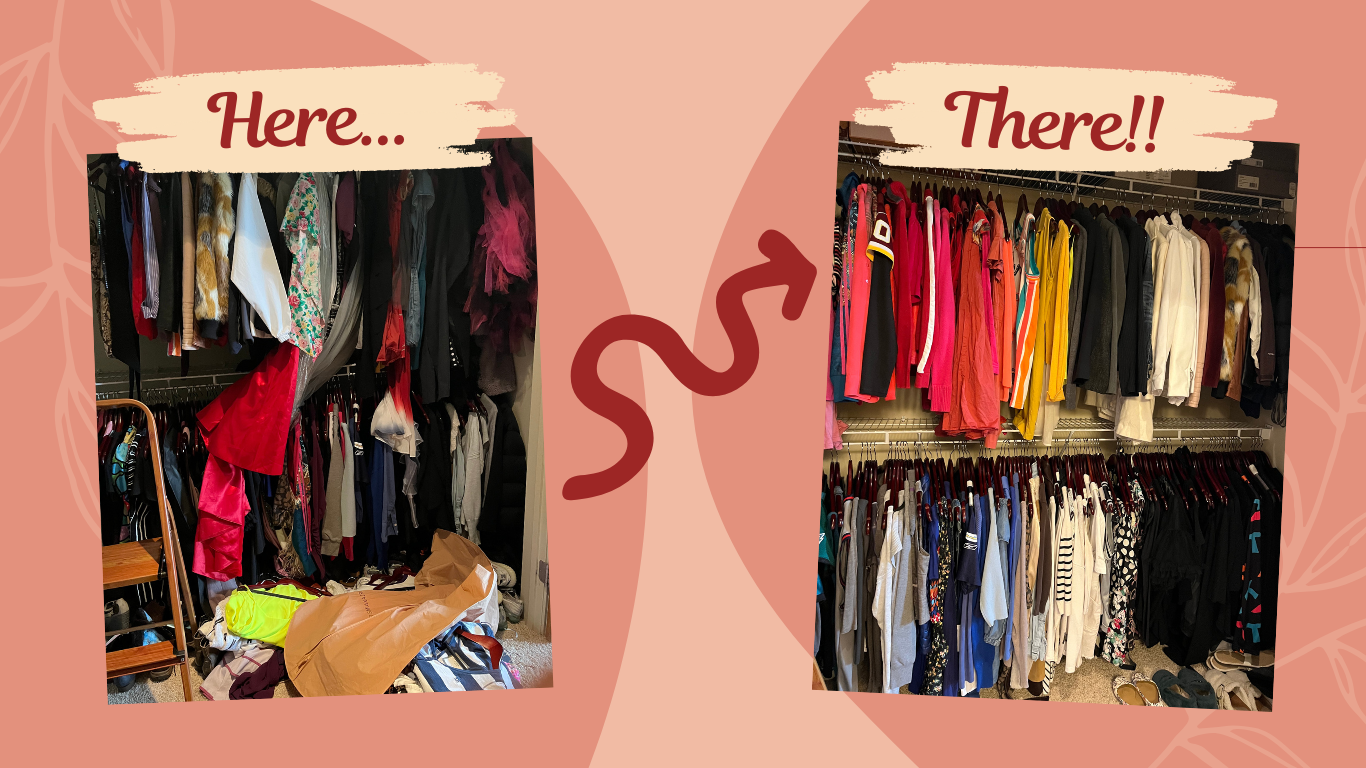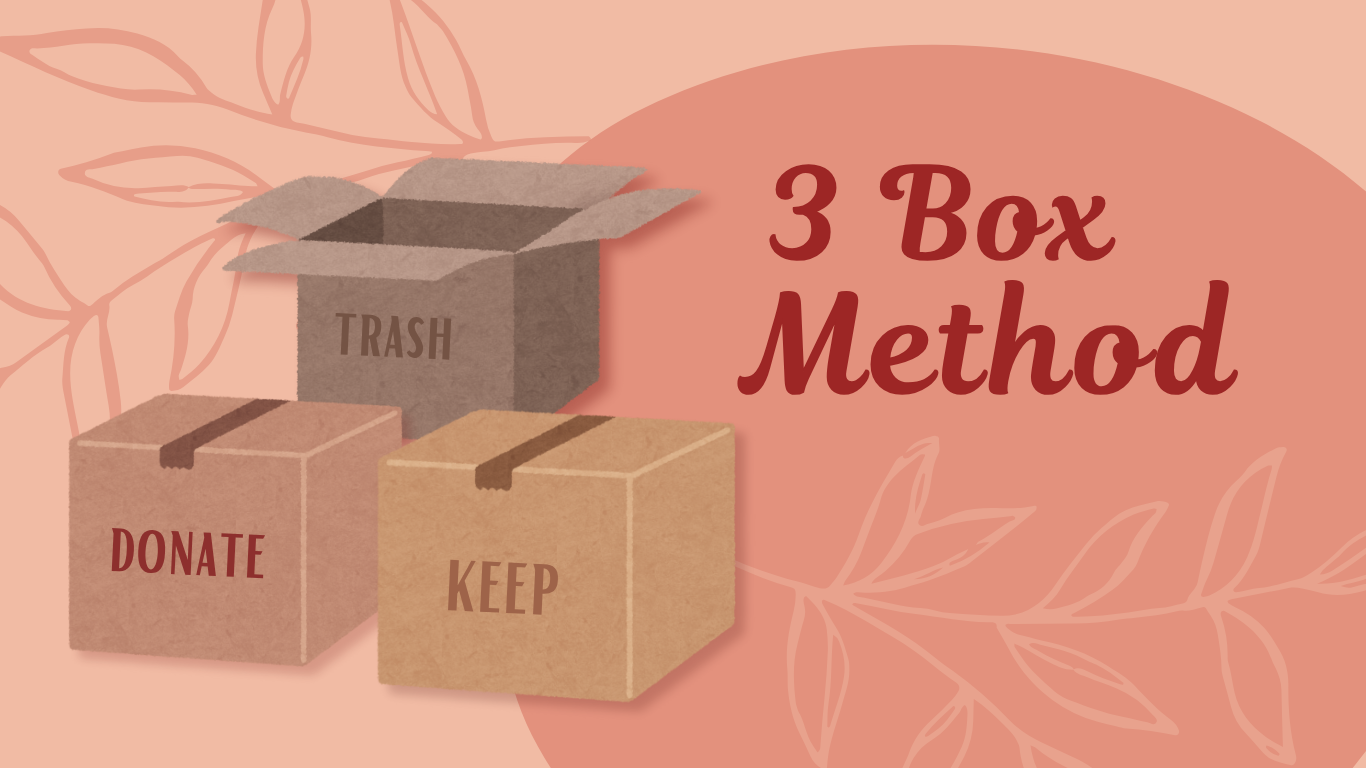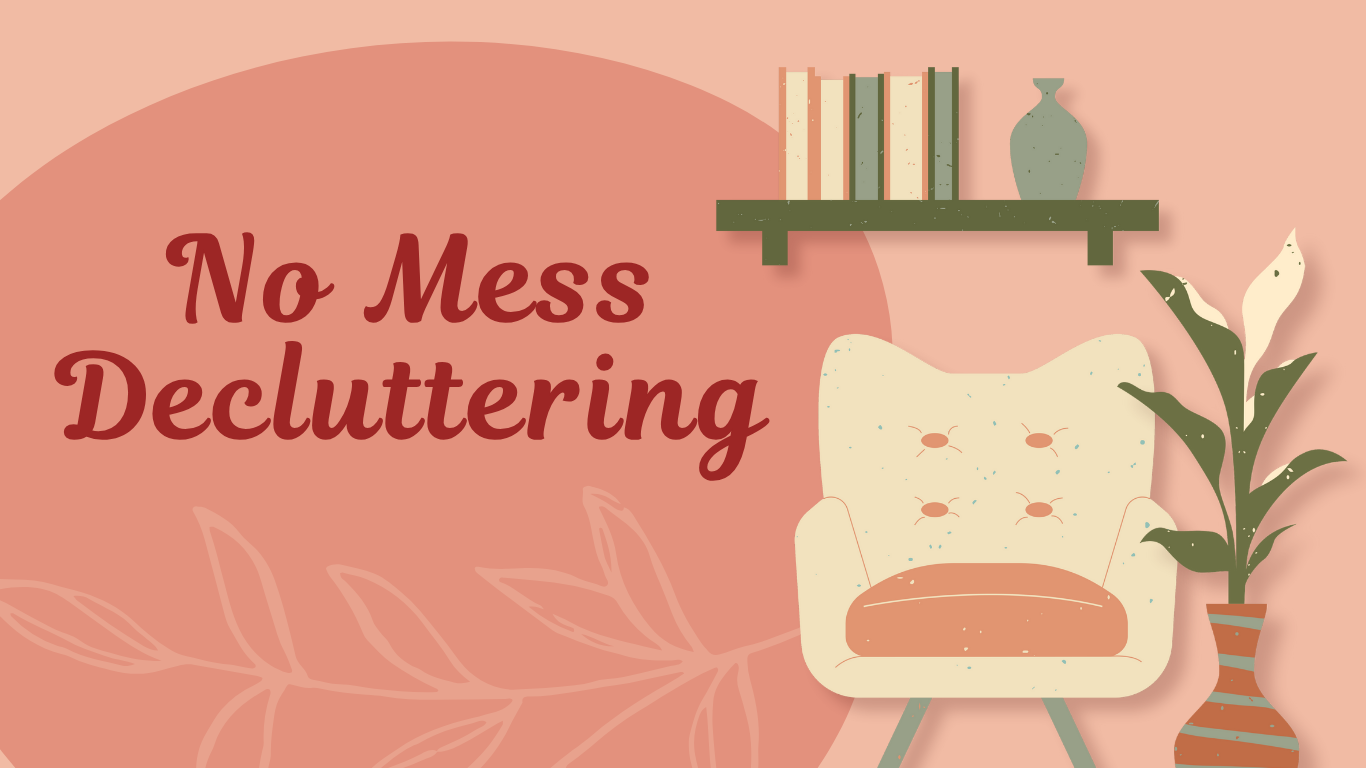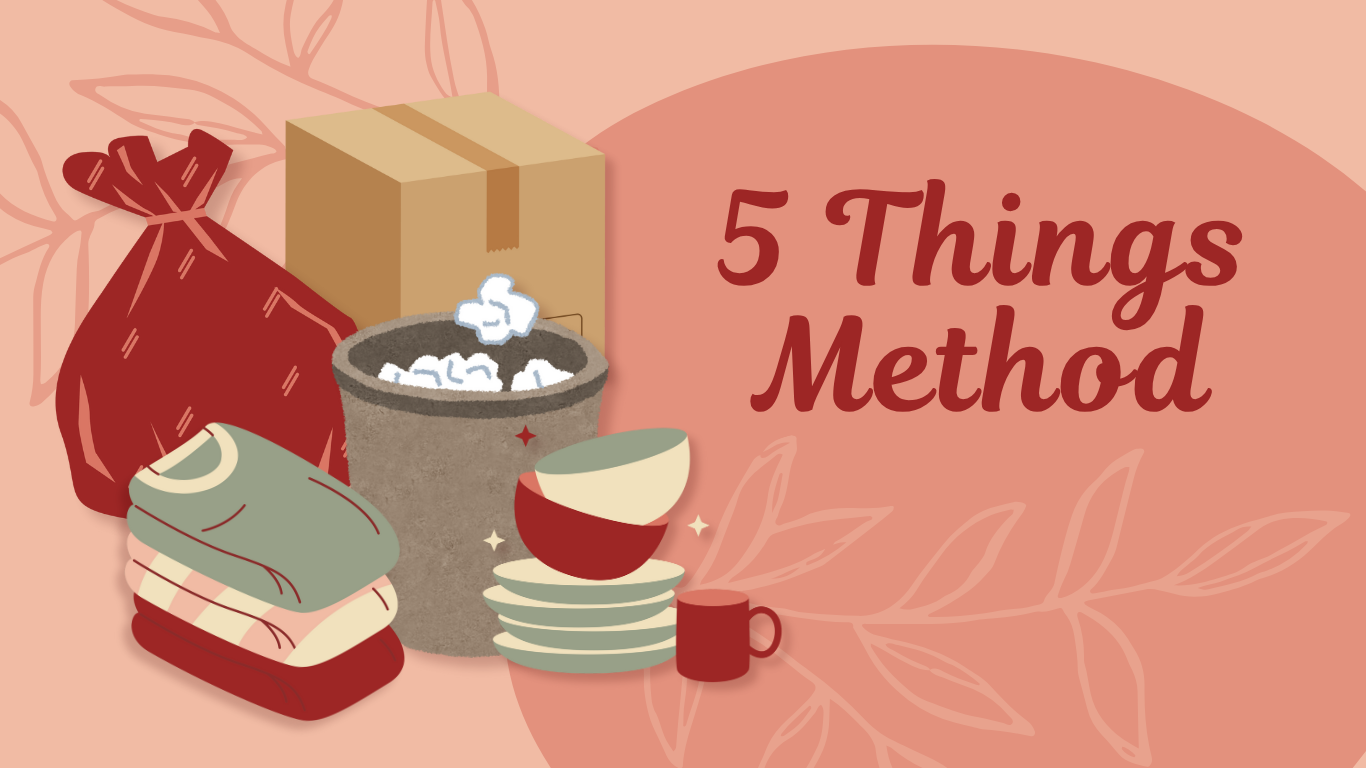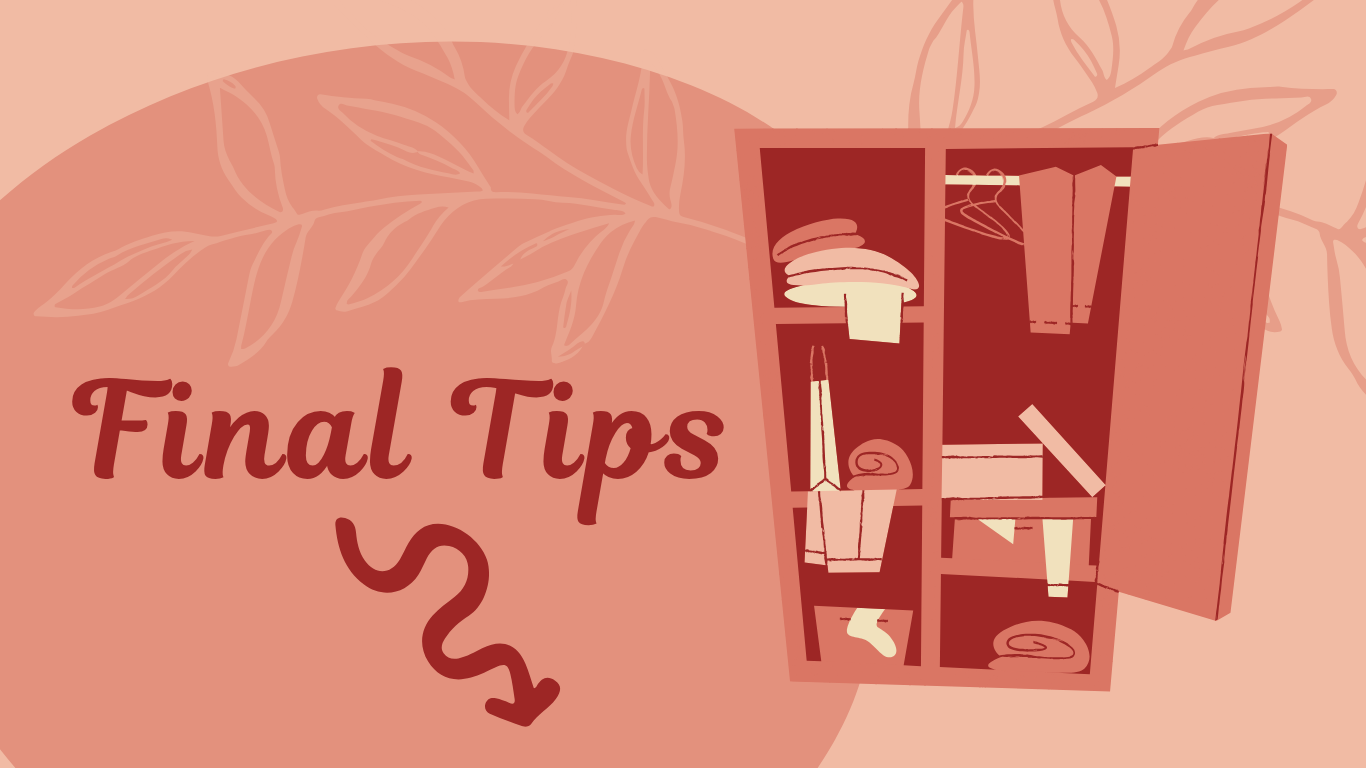No-Mess Decluttering: How to Declutter 3 Ways
How to go from Cluttered to Organized
We’re all trying to get from here to there…but when the deep cleaning motivation wears off and we’re left in a half-combed-through pile that feels less like success and more like still a mess … it’s hard to remember why we started decluttering at all! If you have a history of pulling everything out and then losing your momentum, read on to learn alternative ways to declutter and get organized!
1. The 3 Box Method
This is what I think of as the most traditional way of decluttering. It is the method I use when going to my clients’ homes, however I know that I will clean everything up and put it back in order to leave the home in better condition than it started in. If you run out of energy this method won’t be for you!
Gather 3 containers. I like to use 3 different containers because that helps me have a visual cue of which type of item I am collecting. I use a laundry basket for things that I am keeping, a cardboard box for donations, and a trash bag for trash.
To start, folks take everything out of a space. If this is your first time, limit the amount of space for success. For example, start with a single drawer or a single shelf instead of the entire linen closet.
After you’ve taken the items out, the next step is to sort - if needed. Try to gather like items with other like items. Put all the washcloths in one pile OR make a towel set. Gather all the beach towels together. Put all the medicines into a pile. Depending on volume you may need to sort further: first aid (band-aids and gauze) vs. remedies for sickness (cough syrup, throat lozenges, advil) etc. If you are working with a small amount of items, this step may be unnecessary.
Once you can see what you have you are ready to start making decisions. Try to only handle the items once and make a decision the first time. First ask your yourself if you are keeping or getting rid of the item. Then place it either in the laundry basket for relocation in your home, the box for donations, or the trash bag to throw away. You may decide to create a “keep” pile nearby of items that will go right back into the space you are working on.
Once decisions have been made, you can return your keep items back to the closet, shelf or drawer in a organized way. At this point, consider containers and/or labeling to make it clear to everyone where items go. If you have too much, you may need to edit down further to make it fit!
Pros:
Effective
Get a lot done quickly
Make a big change
Need to set aside time OR work really small (1 drawer, 1 shelf)
Cons:
Interruptions are a major problem
Generates a lot of homework quickly
Running out of steam halfway through the project
2. No-Mess Decluttering by Dana K. White
Dana K. White has a No-Mess Decluttering method. The idea is that you can be interrupted or stop anytime and you don’t have piles of homework that you need to go back to. At any moment you can stop and walk away. This is a great option if you are frequently interrupted, only have small blocks of time to work, or get tired quickly. The drawback is that it can be slower to make progress.
The No-Mess Decluttering method has 5 steps.
Trash. Grab a trash bag and go through and collect as much trash as you can.
Easy stuff. Look for items that are easy to put away. Items that have homes and you know where they go. Take the items there right away and put them away.
Duh! Donations! This again should be an easy category. Look for anything that you already know that you want to get rid of. If the items are in good condition, they are ready for donation.
Items you are unsure about. Now we are getting to the more difficult part. Gather items you are unsure about. Dana has 2 questions to ask yourself to help you move forward:
If I needed this item, would it occur to me that I already had one? If no, discard the item. If yes, move on to question 2.
If I needed this item, where would I look for it? Take it there now!
Container it. Apply containers to the space you are working on. Add labels if needed. Purge items until they fit into the containers and space you have.
With this method, you may run into a problem if you have too many items. For example, in step 2, you find a mug and already have a shelf of mugs in the kitchen. You take the mug there, but the shelf is full! What to do? Dana suggests removing “least favorites” until the mugs that you love fit on the shelf. This is an important concept because it will be easy to remove chipped or broken mugs, or gifted mugs that you never really liked in the first place. It is much harder to decide what to get rid of when you look at and like all of the mugs that are left and it is still too many. This language validates that you like all of the mugs and think they are great, however you have limited space. Begin putting your favorite favorite mugs away on the shelf and/or removing least favorites until it fits.
Another option to consider is that you really love mugs and use them every day and want to consciously and purposefully dedicate two shelves to mugs. You would then choose to forego other items instead to make more room for mugs.
You can see that by following this method, there are no “homework”piles at the end and at every point you are improving the space, never dumping out a whole drawer or shelf which would make a bigger mess!
Cons:
Slower to make progress
Time consuming to walk around
May be tiring if you have energy or physical limitations
Pros:
You can be interrupted or stop anytime
You can make small progress even if things are very full
Progress is not lost between sessions
3. 5 Things Method by KC Davis
KC Davis has a similar method of decluttering or cleaning a room called the 5 Things Method. This is another way to declutter without creating a bigger mess. Again, at no point do you dump out a drawer-ful of items or empty your entire closet onto the floor. This method also has 5 categories or steps as well. KC Davis points out that there are only 5 types of things in every room.
Trash. Look around for any/all trash and put it in a trash bag.
Dishes. She encourages you to relocate the dishes to the sink but do not wash them. If the goal is to get the room cleaned or decluttered, you will lose steam by doing the dishes. You can do them later.
Laundry. Similarly, collect all the laundry and make a pile. Relocate the pile to the laundry room but do not do the laundry.
Things that have homes. Look for items that already have homes and put them away.
Things that do not have homes. This is your true clutter and the items that often get left out, because they don’t have a home to return to. The idea is to decide whether or not you are keeping the item, and then determine a home for it. Once the item has a clear home, it will be easy to put away.
I like this method of decluttering because it is easy to remember and easy to do. As you can see, you could be interrupted or stop at any time and come back to work on it again later. You could even take a break over night and just go back to work the next day. The first four steps are relatively easy as well and shouldn’t take a ton of mental bandwidth. The last step will likely be more difficult, especially if you have a significant pile.
I like to remind myself that even tidy (neat, organized) homes get messy too. A big difference on being able to clean up quickly is if there is a dedicated home for each item. If there are available homes it should be fairly easy and quick to clean up.
Cons:
Slower to make progress
Time consuming to walk around, you may lose energy
You’ll be left with mountains of dishes and clothes at the end!
Pros:
You can be interrupted or stop anytime, even overnight!
You can make small progress even if things are very full
Progress is not lost between sessions
Final Tips
Consider what type of person you are and how you like to do big projects. Do you prefer to work on something 5 minutes a day or block a whole Saturday and invite a friend over for a marathon session? Instead of trying to change, embrace who you are and how you like to do things. There are methods to declutter your home no matter what style or limitations you might have. I hope this guide has given you a method that will work for you, no matter your situation and preferences.
I love when folks do the math to say things like, if you declutter your home for 15 minutes a day, after a month you will have completed 7.5 hours of decluttering! Whether you do the 7.5 hours all at once or spread over the course of a month, spending that amount of time organizing your home will have a huge impact! Now, go get started!
